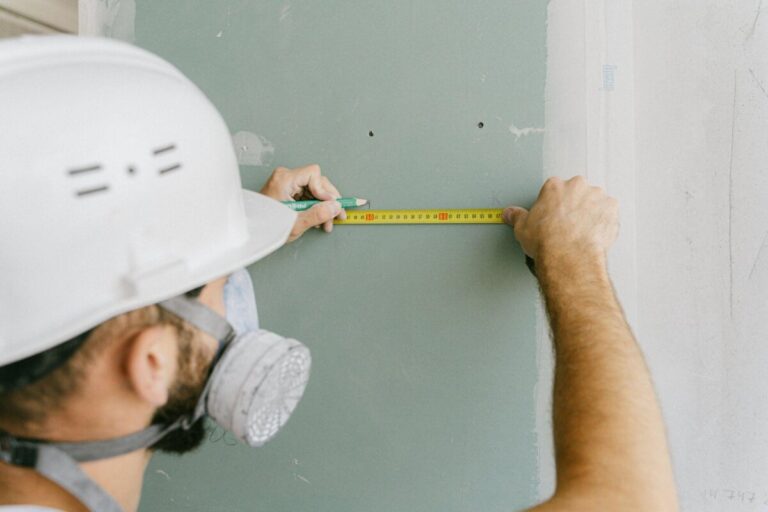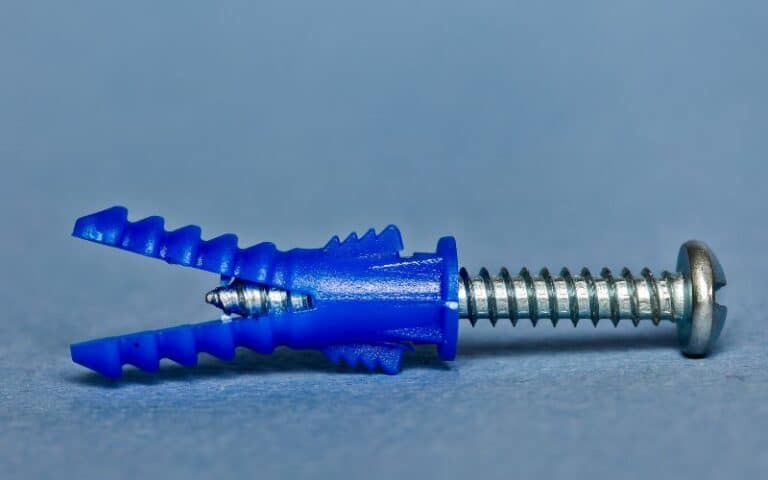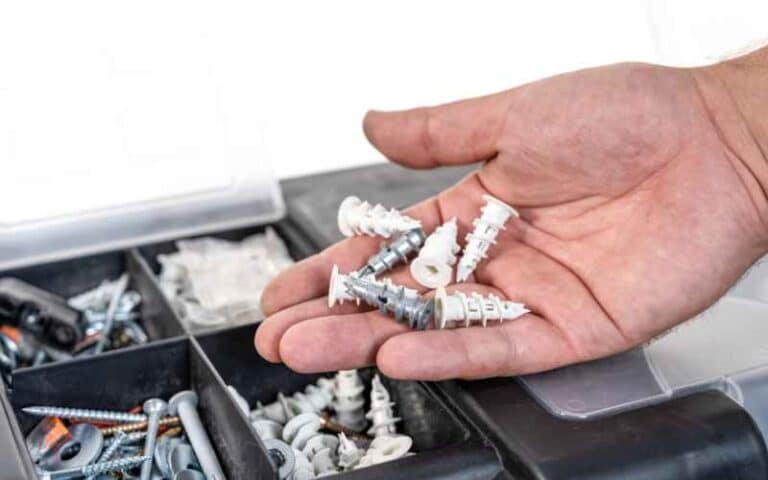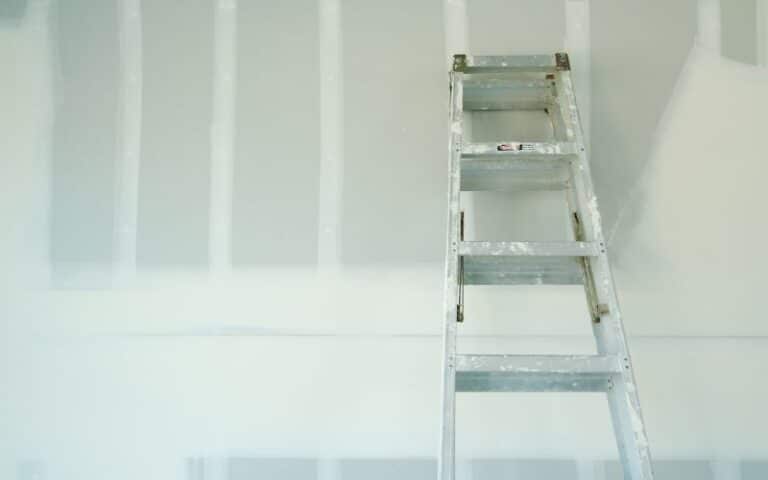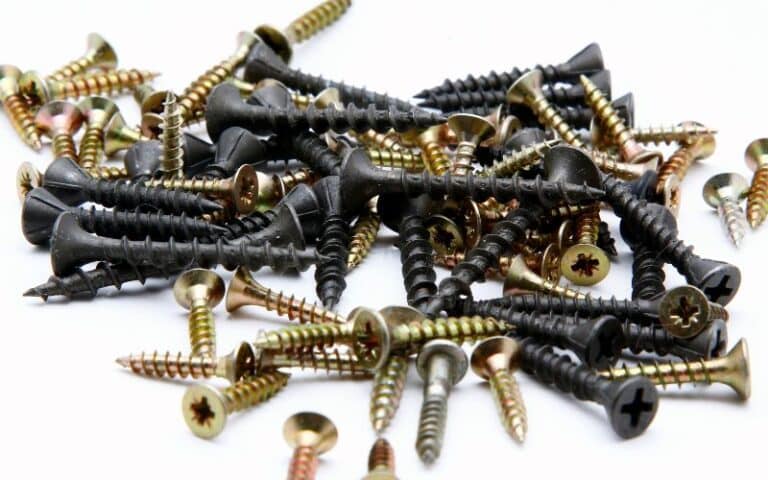Holes in drywall are a common issue homeowners face, whether from hanging frames, accidents, or opening up walls during renovations.
However, sometimes the hole can be too big for a simple patch or cover-up.
How do I fix the hole too big for an outlet? Read on to know more.
If the hole in the drywall is too big for an outlet, you can use a repair plate to cover the hole and provide a stable surface to mount the outlet. Alternatively, you can use an adjustable remodeling box to fit the hole size. Insert the box in the hole, secure it with screws, and install the outlet. Finally, cover the hole with a cover plate.
This article will explore the causes of holes too big for an outlet, their dangers, and the steps to fix them properly.
Ready for a Drywall Quiz?
How Many Gaps Should You Leave Between the Outlet and Drywall?

When installing an electrical outlet in a wall, leaving the right amount of gap between the outlet and the drywall is crucial.
The gap serves a few different purposes, including allowing room for the outlet box and wires and ensuring that the outlet cover fits appropriately over the outlet.
Here’s a closer look at how much gap you should leave between the outlet and drywall.
First, it’s critical to understand that several types of electrical boxes are used for different applications.
The most common types of electrical boxes for outlets are the standard rectangular box and the old work box.
The standard rectangular box is typically used in new construction and requires that the box be mounted to a stud or other solid surface behind the drywall.
For a standard rectangular box, leave a gap of about 1/4 inch between the box’s edge and the drywall’s edge.
The gap allows the box to sit flush with the wall’s surface and provides enough room for the wires to be properly secured inside the box.
If the gap is too small, adequately installing and covering the outlet can be challenging, and the box may not sit flush with the wall.
If the gap is too large, the outlet cover may not fit properly, and the box may be loose.
It’s important to note that the gap between the outlet and drywall is not the same as the gap between the outlet cover and the wall.
Fives Ways to Fix an Oversized Outlet Hole in Drywall
There are various methods to fix an oversized outlet hole in drywall. Here are five ways to improve a large outlet hole in drywall.
#1. Install an Oversized Outlet Cover
The easiest solution is to install an oversized outlet cover that hides excess space around the outlet.
Oversized outlet covers are readily available at hardware stores and can be installed with a screwdriver.
#2. Use a Drywall Patch Kit
A drywall patch kit can fill the gap around the outlet. The kit includes a piece of mesh tape and a small joint compound.
Apply the tape over the gap and smooth the joint compound.
After the compound dries, sand it until it is smooth and flush with the wall.
#3. Use a Foam Backer Rod
A foam backer rod can fill the gap around the outlet. The rod is a cylindrical piece of foam that can be cut to the length of the gap.
Insert the foam rod into the gap until it is flush with the wall, and then apply joint compound over the rod.
After the compound dries, sand it until it is smooth and flush with the wall.
#4. Use Wood Shims
Wood shims can fill the gaps If the gap around the outlet is too large for a foam backer rod.
Cut the shims to the length of the gap and insert them into the gap until they are flush with the wall.
Apply joint compound over the shims, and after the compound dries, sand it down until it is smooth and flush with the wall.
#5. Replace the Drywall
If the gap around the outlet is too large to be filled with the above methods, replacing the drywall around the outlet is best.
Cut out the damaged section of drywall and replace it with a new piece.
After installing the new drywall, tape and finish the seams and apply primer and paint to match the surrounding wall.
Is Caulking Around Electrical Outlets in Drywall Safe?
Caulking around electrical outlets in drywall is generally safe as long as it is done correctly and with the appropriate materials.
The purpose of caulking around electrical outlets is to seal any gaps between the outlet and the surrounding drywall, which can help to prevent drafts, moisture, and insects from entering the home.
When caulking around electrical outlets, using a non-conductive caulk whose design is explicit for electrical components is vital.
This type of caulk will not conduct electricity or damage the outlet’s electrical components.
The National Electrical Code (NEC) requires that all electrical outlets be accessible and not covered by permanent finishes such as drywall.
It means that if the outlet needs to be accessed for maintenance or repair, it should be easily accessible and not covered by caulk or other materials.
While caulking around electrical outlets may seem like a quick and easy fix, there are pros and cons to consider before using this method.
| Pros | Cons |
|---|---|
| It prevents moisture | It can be difficult to remove |
| It is aesthetically pleasing | It is not advisable for all situations |
| There is a reduction in air leakage. | There is a higher possibility of fire hazards when it needs to be correctly put in place. |
How to Cover Outlet Holes in Drywall?
Covering outlet holes in drywall can be a relatively simple task, but it requires careful attention to detail to ensure a safe and effective solution.
Here are the steps to cover outlet holes in drywall:
Step 1
The first step is to turn off the power to the outlet. Before beginning any work on the outlet, turning off the power to the outlet’s circuit is crucial.
You can do this by turning off the breaker switch that controls the circuit.
Step 2
Using a screwdriver, remove the cover plate from the outlet. Keep the screws in a safe place so you don’t lose them.
Step 3
Carefully remove the outlet from the electrical box. You may need to loosen the screws that hold the outlet in place.
Now that the outlet is loose, gently pull it out of the electrical box and disconnect the wires.
Step 4
The fourth step is cutting out a drywall patch. You must purchase a saw or utility knife to cut a drywall piece bigger than the hole.
You can also use a tracing wall repair or self-adhesive mesh patch.
Step 5
Attach the drywall patch by holding on to the hole and tracing it using a pencil. Cut along the traced line with a drywall saw or utility knife.
Apply a very thin layer of the joint compound behind the patch and press it firmly into place. Smooth out any air bubbles or lumps.
Step 6
Add your joint compound to the patch edges, smoothing it with a knife.
Next, clean the edges of the joint smoothly so that it blends seamlessly with the closest wall.
Step 7
Allow the joint compound to dry completely, and smooth it with a sanding block or sandpaper.
Apply a second joint compound layer, following the same process.
Repeat this process until the patch is completely smooth and flush with the closest wall.
Step 8
Replace the outlet once the joint compound is completely dry, then reattach the wires to the outlet and secure it back into the electrical box.
Finally, replace the cover plate with the screws.
FAQs
What Do I Do When the Outlet Hole Gets Oversized?
You can use an oversized cover plate, install an outlet box extender, or replace the outlet box if needed.
How Do You Fill Big Holes in Drywall?
Cut a square around the hole to fill big holes in the drywall. Then, insert a new piece of drywall & secure it with screws—finally, tape, mud, and sand.
How Do You Fix a 1-inch Hole in Drywall?
Cut a square around the hole to fix a 1-inch hole in the drywall. Then Insert a drywall patch and secure it with screws. Afterward, tape and sand until smooth.

